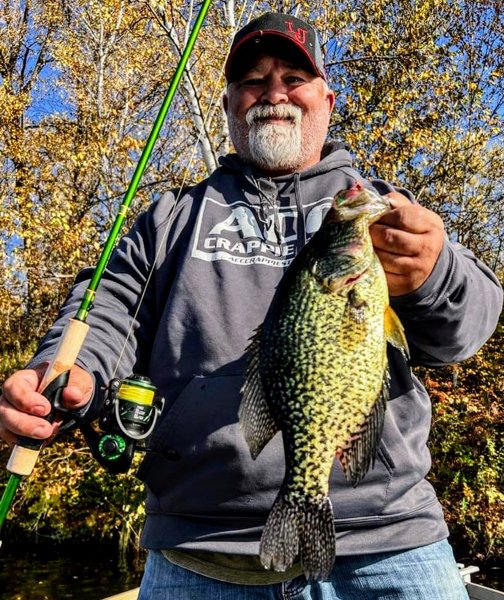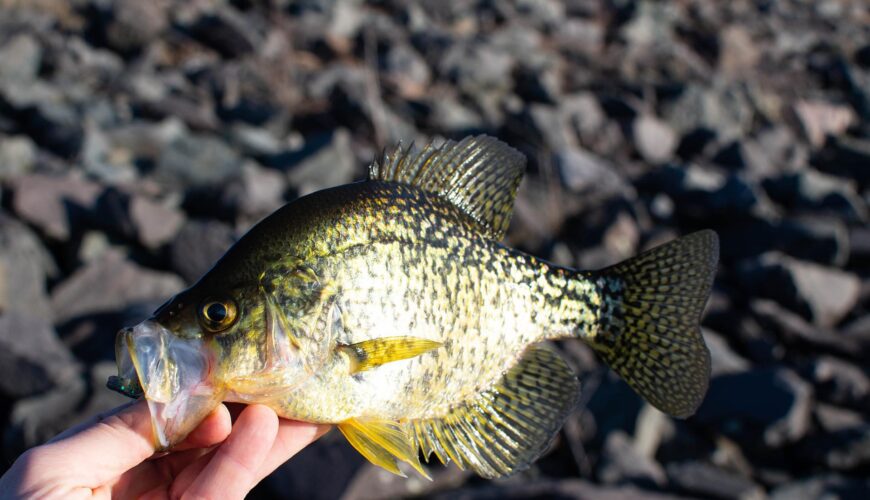Tactics
National Deer Association’s 5 Top Tips for Late-Season Deer Hunting
December 17, 2025 •iSportsman Staff
March 8, 2023
How to find big crappie seems to be a well kept secret. In reality it is imperative to know their preferred habitat for the season. It’s worth saying a hundred times: ninety percent of the fish are going to be found in ten percent of the water.
Crappie, like most species of fish, like the security of structure and want something nearby to relate to. On bluebird sky days after a front has moved through it can be rough. Sometimes they are almost rubbing their sides against submerged wood, buried deep in a brush pile, or almost laying on a rock shelf. When they’re in that passive state, it’s like they have the drapes pulled, a bathrobe on and are hiding from the world while watching soap operas. On those days a minnow or grub is going to have to dangle right in front of their face to get bit.
On a day when they want to eat, crappie move away from the structure and attack any hapless critter that drifts by, like football fans seeing a pizza delivery man at a tail-gate party! But even in an aggressive state, the structure is never far away.
In spring crappie are going to be following their biological urge to procreate, but the water temperature governs when they do. Crappie winter in deep water and as the water temperatures warm the crappie start slowly migrating from the main lake towards tributary arms. They follow the structure provided by old creek channels and stump rows into shallower and warmer water. When the water temperature reaches the optimum fifty-five to sixty degrees, the spawning frenzy begins.
Spawning season is the easiest time for most anglers to find crappie. Any laydown or flooded brush that sticks above the water is a beacon to slab seekers. The crappie are easily found in the shallows close to the bank, usually one to five feet in depth, preferring to spawn in brush or submerged wood. Anglers can fill a live well in no time at all when everything is right.

As the spawn ends crappie move back into deeper water but still prefer to relate to structure. This can be flooded timer, old creek channels, rocky points and other forms of structure scattered around the lake. It’s these times that a quality fish finder can put fish in the boat.
Fishing exposed woody structure can be productive, but the fish get slammed with baits. As the days progress bigger fish become harder to find so anglers need to find the unseen structure that lies hidden beneath the surface.
On larger lakes finding structure can easy. Many sporting goods stores sell water-proof lake maps by Fishing Hot Spots. The maps show old creeks channels, stump rows, old road beds and remnants of standing timber. Using a common depth finder it’s easy enough to find the marked channel or stump row and follow it to fish.
A lesser known method of finding crappie is to seek out and follow old creek channels while slowly trolling and watching the bottom on a fish finder. An active school of crappie will often appear as a mess of “spaghetti”. The crazy lines are actually active crappie. By putting out a marking buoy when a school is found anglers can stay on station and drop baits down into the school. Anglers can often find fish bigger than they ever imagined!
With the right gear, finding structure is as easy as watching TV. With the new side imaging and down imaging fish finders by Hummingbird, anglers can see structure and sometimes even the fishing holding in it with remarkable clarity. Using side-imaging sonar an angler actually sees over 400 feet of the bottom. Every submerged tree, stump, rock pile, creek channel, or secret brush pile is as clear as day. The days of not knowing what a fish finder was showing are over! Schools of bait fish are clearly seen, as are larger fish. With the GPS marking feature, once a school of baitfish or likely structure is marked, it is as easy as cruising over and tossing the lines in the water!
The key to finding big crappie is finding hidden structure that few know about and even fewer fish. Success requires a quality high-resolution fish finder and lots of time putting it to use, and that sounds like a great day on the water!
